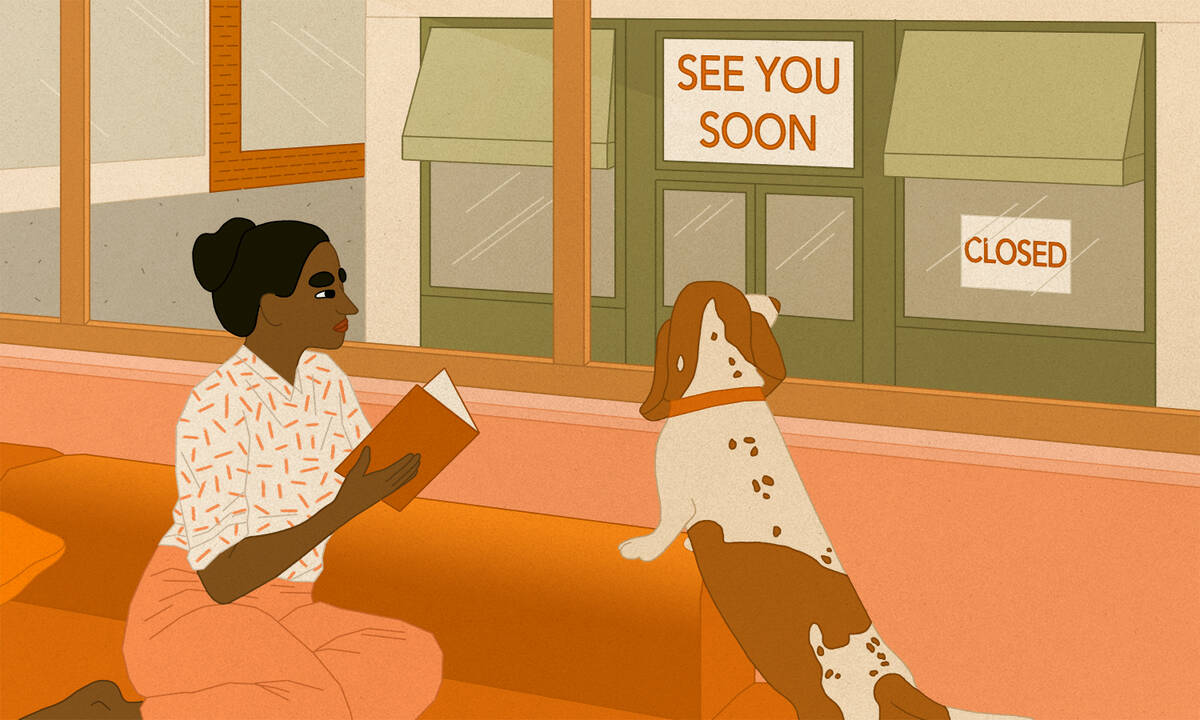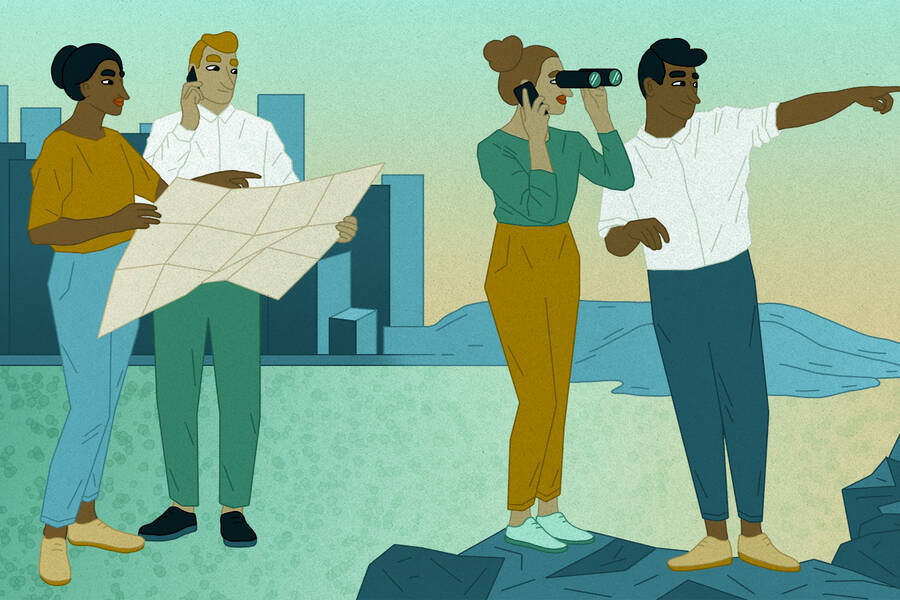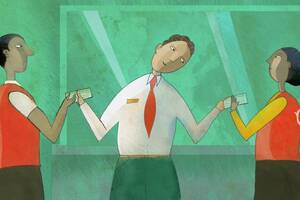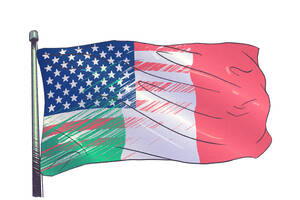It’s a brutal trade-off: inducing massive economic suffering in order to save human lives.
That’s what policymakers across the world are weighing as they decide whether to shutter millions of stores, restaurants, and offices in hopes of curtailing the spread of COVID-19.
These drastic policies, enacted across much of the U.S., will undoubtedly save lives. Yet the economic toll of these measures is expected to be in the trillions, leading some commentators, including President Trump, to argue that the cost of stemming the pandemic could soon exceed the human cost of the pandemic itself.
However, new research suggests that not shuttering these businesses would be much costlier to society, once both the economic and human costs are factored in. Although proceeding with business as usual would avert a severe recession, it would also cause hundreds of thousands more deaths—and, based on accepted estimates of the cost of a lost life, this increased human toll will more than cancel out the expected economic benefits.
The researchers conclude that containment measures are not only economically justified—they’re the only way to ensure that people will change their behavior enough to minimize the full cost of the virus.
The paper, from Northwestern economics professor Martin S. Eichenbaum, Kellogg finance professor Sergio Rebelo, and Mathias Trabandt of Freie Universität Berlin, merges epidemiological and macroeconomic theory to consider how policymakers should optimally respond to the virus, taking both human lives and economic activity into account.
The study suggests that the ideal containment policy doesn’t cease all economic activity at once, but instead gradually closes businesses as the number of infections rises. The rationale: if everyone is kept away from the virus, no one will develop an immunity, so as soon as the containment measures are lifted, the infection rate will again soar.
There are, however, two scenarios that call for more drastic and immediate containment: if the hospital system will be overwhelmed or, perhaps counterintuitively, if a vaccine is close to release.
Learn more from Sergio Rebelo in Kellogg Executive Education’s Enterprise Leadership, Merger Week, and Corporate Finance programs.
The Cost of Doing Nothing to Contain the Coronavirus
To predict how diseases will spread, epidemiologists rely on mathematical models that are based on factors such as the fatality rate and the number of individuals who are susceptible or infected in a given society.
However, most commonly used models do not account for how people may change their behavior in response to the disease. ”People say, ‘Well, I don’t want to be infected, therefore I’m going to shop less, and I’m going to work less,’” explains Rebelo.
So the researchers built a hybrid macroeconomic–epidemiological model that does account for these shifts. Using this hybrid model, they estimate how much a rational person should choose to work, or to venture out for goods and services, given that each outing increases their odds of catching COVID-19.
Then, based on those estimates, the researchers forecast the likely number of infections and deaths in the U.S., as well as the economic consequences of the virus.
“If you do nothing, it’s pretty bad.”
First the researchers considered what would have happened if governments hadn’t stepped in and people were allowed to decide for themselves how much to risk exposure by shopping and working. Such a scenario (which assumes there’s no vaccine for the virus) would likely result in a relatively small recession, with aggregate consumption falling slightly in the peak infection months. The long-term effect on GDP, too, would be relatively small.
Yet when you account for the human costs of such a laissez-faire policy, the consequences are stark. The model suggests that hundreds of millions of Americans would become infected, and several million would die. The researchers peg the economic cost of a lost life at $9.3 million, the standard number used by the federal government in such calculations, derived from decades of economic studies that look at how much additional compensation people expect for doing potentially life-threatening jobs (the assumption being that that difference is the economic value we place on a lost life).
Based on this figure, the total costs of doing nothing reach the tens of trillions of dollars. (Even when the researchers substitute more conservative estimates of the value of a human life, the total cost remains staggering.)
“If you do nothing, it’s pretty bad,” Rebelo summarizes.
This outcome occurs because people choose to cut their shopping and working by only the amount that reduces their own personal rate of infection—ignoring that every time they venture out, they may spread the virus to others.
Rebelo notes that this behavior does not reflect irrationality or a lack of good intentions. “The reason people don’t think they matter for aggregate infection rates is the same reason why they think they don’t matter for global pollution,” he explains. “I know that if I were to drive less, there would be less pollution. But I’m such an infinitesimal part of the economy that my behavior is not going to affect overall pollution. So, I keep on driving. And since everybody thinks like I do, there’s a lot of pollution.”
If Hospitals Become Overwhelmed, Human Costs of COVID-19 Rise Dramatically
The prior projection makes a critical assumption: that hospitals will have sufficient space, equipment, and personnel to treat everyone who is infected, meaning that the mortality rate will remain steady throughout the duration of the outbreak.
However, if demand on the healthcare system exceeds its capacity—as was the case in parts of Italy and China, and may soon happen in parts of the U.S., too—many infected people will not be able to get the treatment they need, leading the mortality rate to increase.
“If you ramp up containment, you can greatly reduce the number of deaths.”
Running their model again to account for the possibility that medical shortages could push mortality rates much higher, the researchers find that people will be more likely to change their behavior on their own.
“I know that if I get infected, there are not enough hospitals, and so I’ll be more cautious,” Rebelo says. This fear would drive people to voluntarily cut back on work and consumption even without mandated closings.
But, once again, these changes in behavior would stem the spread of the virus only so much. The researchers predict that more than 1 percent of the country—many millions of people—would nonetheless die. “It’s just a horrific scenario,” says Rebelo. “It’s unimaginable.”
Despite The Extreme Economic Cost, Containing the Virus Makes Society Better Off
Given the extreme costs of these scenarios, the researchers set out to determine what level of working and purchasing would be best for society as a whole, by minimizing the combined costs from a recession and the loss of human life (again assuming no vaccine was on the horizon).
They found that in order to achieve the best-case scenario, containment measures would need to curtail economic activity considerably. Lockdowns and similar policies would have to reduce consumption of goods and services by an amount several times larger than would happen organically with no government mandates.
To be clear: such a drop would lead to a severe recession, with total consumption falling by more than the amount it fell in the 2008 recession.
Yet this steep drop in economic activity would help limit the spread of the virus, reducing the death toll by hundreds of thousands compared to the scenario with no containment. “If you ramp up containment, you can greatly reduce the number of deaths,” says Rebelo.
And based on that widely accepted economic cost of a lost life, the benefits of saving so many people outweigh the direct economic costs, severe as those costs may seem.
In the event that hospitals could not keep up with patient needs, a robust containment policy would be especially imperative, to “flatten the curve” of infections and avoid overwhelming healthcare systems. The model predicts that, in the event that hospitals will reach full capacity, an optimal containment strategy would save millions of lives in the United States.
Additionally, while the ideal containment scenario would initially lead to a deep recession, the economy should rebound more in the long term than it otherwise would. Permanent GDP in the containment scenario would drop by under 1 percent—a smaller drop than in the laissez-faire scenario, largely because there will be more living, healthy workers around to keep the economy going.
The study also suggests how policymakers might best roll out containment policies: by escalating them gradually over time, as the virus spreads, and then cutting them back as infection rates decline.
“What you’d like to do is move to smart containment, where you know the health status of different people.”
Why not just take draconian steps like total lockdowns right away, to stay on the safe side? In this particular scenario—which assumes (hypothetically) that no vaccine is possible—the answer comes back to epidemiology.
“Supposing there are no vaccines and no treatments, the only way for the epidemic to end is for enough people to be exposed to the virus, and to become immune to the virus,” says Rebelo. “That’s what’s known as herd immunity.”
A total crackdown will prevent herd immunity from ever taking hold. “If you reduce the number of deaths to zero, then you’re never going to get out of this, because the minute you lift containment, you’re going to have a second epidemic,” Rebelo explains. Gradually ramping up containment, on the other hand, allows small portions of the population to be exposed to the virus, so that, once containment measures are rolled back, the virus will peter out.
Policymakers Still Need to Contain the Virus, Even If a Vaccine Is On the Way
Finally, the researchers considered how the development of either a treatment or a vaccine for COVID-19 would alter their predictions.
Assuming that a cure is about a year away, the researchers predict that its arrival will change very little. “The course of the infection is more or less a year,” Rebelo points out, meaning the virus will have already run its course by the time a treatment appears.
If a vaccine is likely to arrive within a year, however, the story is different. While a treatment helps those who are already sick, a vaccine only saves individuals who have not yet contracted the virus. So if policymakers expect that a vaccine is forthcoming, “they have much more of an incentive to prevent people from getting infected,” in hopes of minimizing the death toll, says Rebelo.
Rather than gradually ramping up containment efforts, then, the optimal policy would be to immediately impose strict limitations on working and shopping, since herd immunity is no longer a concern. “You put the brakes on right away, try to frontload the containment, because you’re trying to buy some time for the vaccine to arrive,” says Rebelo.
While this decision would lead to a severe recession, the authors write, “this recession is worth incurring in the hope that the vaccination arrives before many people get infected.”
U.S. Containment Measures Are on the Right Track
The study offers some hopeful news: the intensive containment measures being implemented across much of the U.S. are likely to drastically reduce the death toll of the virus and are therefore well worth the economic cost, however large it may seem.
Yet the findings also convey a devastating reality that even in the best-case scenario, without a vaccine, the U.S. should expect a deep recession and more than a million lives lost.
Rebelo notes that simply keeping the entire population from going shopping or heading into the office is a blunt tool for containment.
“What you’d like to do is move to smart containment, where you know the health status of different people,” he explains. “There are some versions of that already in Asia, where people walk around and take your temperature, and if you have a fever, you have to go home.” Such measures could help reduce the economic pain, while still minimizing the death toll.
By bringing together the economic and human dimensions of the pandemic, the study helps clarify the immense value of robust containment policies—and the danger of failing to follow through on them. It’s a message that hits close to home for Rebelo.
“My great-grandmother had 11 kids but only three reached adulthood,” he says. “The other eight died in 1918 from the Spanish flu.”
Featured Faculty
Charles Moskos Professor of Economics, Weinberg College of Arts & Sciences; Co-Director, Center of International Macroeconomics (CIM); Professor of Executive MBA (Courtesy)
MUFG Bank Distinguished Professor of International Finance; Professor of Finance; Faculty Director of the EMBA Program
About the Writer
Jake J. Smith is a research editor at Kellogg Insight.
About the Research
Eichenbaum, Martin S., Sergio Rebelo, and Mathias Trabandt. "The Macroeconomics of Epidemics." Working paper.
Read the original




